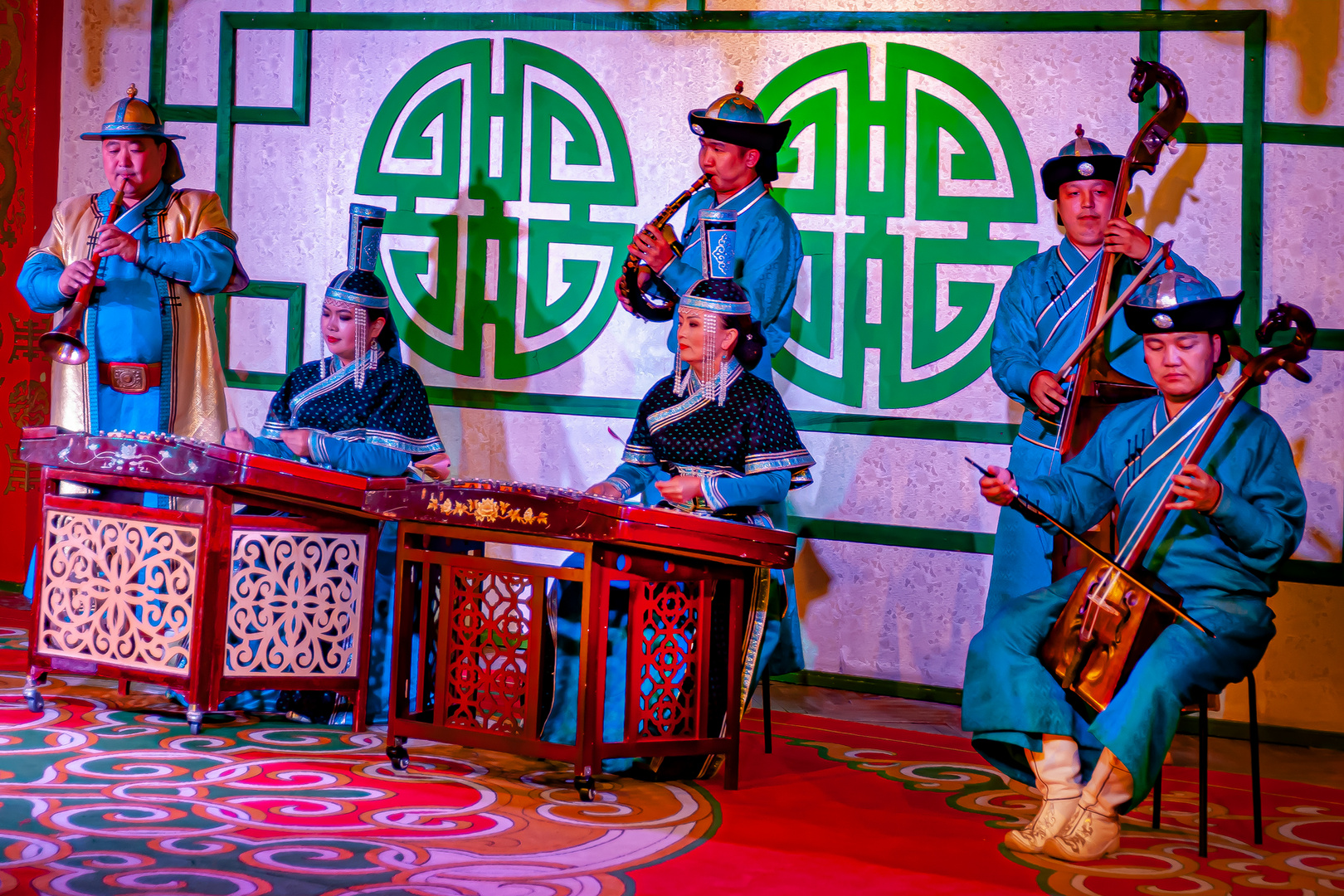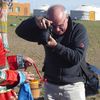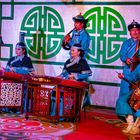Mongolian music orchestra
A traditional Mongolian music assemble playing on their instruments:
The musican on the left plaing on the Bishgüür, a richly ornamented metal trumpet,
two ladies playing the Yatuga, a half-tube zither with a movable bridge. It is constructed as a box with a convex surface and an end bent towards the ground.
The instrument was mainly used at court and in monasteries, since strings symbolised the twelve levels of the palace hierarchy.
The man behind playing the Surnai buree, a folk oboe with a conical body made of wood or horn widening towards the end. It has seven finger holes and one thumbhole. The short form of the instrument is known as "haidi", meaning 'flute of the sea'.
The man standing beside him plays the Khun tovshuur two-stringed instrument. The body and the neck are carved from cedar wood and the body
is often covered with the leather of wild animals, camels or goats. The strings are wound from horsetails hair and tuned in the interval of a fourth.
And the man sittig on the rightside playing the Morin khuur the horse head violine a typical Mongolian two-stringed instrument. The body and the neck are carved from wood. The end of the neck has the form of a horse-head and the sound is similar to that of a violin or a cello. The strings are made of dried deer or mountain sheep sinews. It is played with a bow made of willow, stringed with horsetail hair and coated with larch or cedar wood resin.?
This instrument is used to play polyphonic melodies, because with one stroke of the bow the melody and drone-strings can be played at the same time.
The morin khuur is the most widespread instrument in Mongolia, and is played during celebrations, rituals and many other occasions, as well as an accompaniment for dances or songs.
?




















Ralf Melchert 28/01/2022 9:50
Klasse die Truppe präsentiert